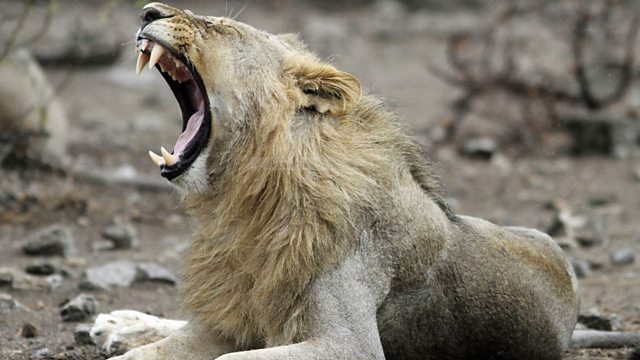
Lessons from Hunting Cecil the Lion
The issues surrounding hunting from population control, to poaching and for sport.
Oxford University’s Andrew Loveridge tells the ���˿��� about the scientific study of Cecil the lion and his pride. Dominic Dyer, policy officer of the charity Born Free explains the latest killing in the broader context of the trophy hunting industry. The ���˿��� Science Unit’s Fi Roberts will soon be heading out to southern Africa to explore the conservation issues surrounding the legal hunting of big game. She tells the Science Hour what questions she will be pursuing in the programme.
Kirigami Graphene
Upon discovering graphene’s stretchable properties to be incredibly similar to paper, a group of researchers have proceeded to apply the ancient Japanese art of paper-cutting or ‘kirigami’ to the single atom thick material. The ability to cut and stretch a sheet of graphene, like you would paper, infers promising uses for the material to create soft, stretchable electronics – at the nanoscale level.
Ebola Vaccine
Scientists have found that a vaccine has given 100% protection against Ebola. An international team gave the vaccine to just over 2000 people in Guinea who had a close relative with the disease. None of them developed Ebola. Professor Jonathan Edmunds of the London School of Hygiene and Tropical Medicine explains the research.
The Colour Purple
In 1856, a teenager experimenting at home accidentally made a colour that was more gaudy and garish than anything that had gone before. William Perkin was messing about at home, trying to make the anti-malarial Quinine - but his experiment went wrong. Instead he made a purple dye that took Victorian London by storm. Philip Ball tells the story of this famous stroke of serendipity. Laurence Llewelyn- Bowen describes the fashion sensation that ensued and chemist, Andrea Sella tells how Perkin's purple prompted the creation of much more than colourful crinolines.
Are Game Play and Screen Time Bad for You?
Young people love their computer games, mobile phones and social media. But is spending hours playing and socialising at their screens bad for their brains, behaviour and health? Claudia Hammond consults researchers who have explored these questions. Some of the findings may surprise you.
(Photo: A lion. Credit: Fiona Roberts)
Last on
More episodes
Previous
Broadcasts
- Sat 1 Aug 2015 21:05GMT���˿��� World Service Online
- Sun 2 Aug 2015 10:05GMT���˿��� World Service Online
Podcast
-
![]()
Unexpected Elements
The news you know, the science you don't

